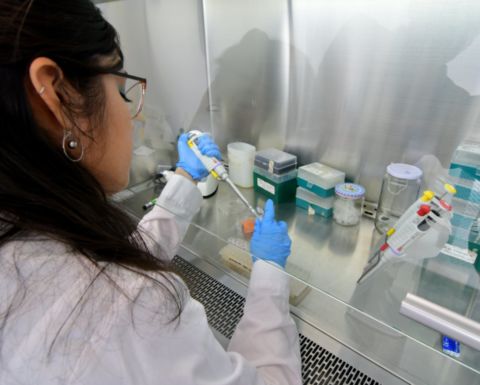Scientists of South Ural State University have developed an application to evaluate the possibility of detecting psoriasis efficiently using neural networks. The research was presented at the FarEastCon 2020 International Multi-Conference on Industrial Engineering and Modern Technologies.
More advanced technology – more accurate diagnosis
Scientists of the Department of System Programming of the School of Electronic Engineering and Computer Science under supervision of the Candidate of Sciences (Engineering), Associate Professor Mikhail Sukhov, have been working on the creation of a program that will accurately diagnose psoriasis. It is difficult to correctly diagnose the form and type of this disease due to its similarity with many other diseases. A comprehensive examination and various tests are required. Only a qualified and experienced dermatologist can make the correct diagnosis and prescribe treatment in order to achieve a long period of remission and avoid damage to internal organs.
“Diagnosis of psoriasis from a photography using a neural network approach will reduce the likelihood of errors by dermatologists in determining the type of a disease,” says Mikhail Sukhov. “In modern science and medicine, the topic of using neural networks to determine the presence of a disease is very popular. Such systems have several advantages over the expert physician. They are objective, stable, and provide the most optimal solution based on a huge knowledge base that they retain forever. At the same time, this approach completely excludes human factors, because the knowledge of even a competent specialist can be forgotten or confused."
At present, psoriasis is one of the most common chronic recurrent skin diseases affecting 1 to 5% of the population in different countries.
Research work and its prospects
Data for training and testing the neural network have been collected manually from the specialized atlas site DermLine, which is used by doctors and medical students.
To train neural networks, a supervised learning method has been chosen. The teaching algorithm itself acts as a teacher. Training takes place on the basis of a training sample, which is a dataset of two types of images: with and without psoriasis. A preprocessed image is fed to the input of the neural network. The output is the classification results and the accuracy of this result.
“The high-level Python 3.6.9 language is used to implement the software part of the system. The work is carried out in the Google Colaboratory environment, a cloud-based machine learning platform with free access to tensor processors. Free access to a virtual machine with 12.72 Gb RAM and TeslaK80 accelerator with a memory limit of 0.5 GB Gb is provided. The following libraries are used to implement the application: TensorFlow 2.2.0, Keras 2.3.1, Matplotlib 3.2.1, NumPy 1.18.4,” explains Venera Mustafina.
Further research in this field suggests improving and replenishing the database, which will increase the accuracy of the image classification, reduce the likelihood of errors in the images with other outwardly similar skin diseases.
South Ural State University (SUSU) is a university of digital transformations, where innovative research is conducted in most of the priority fields of development of science and technology. In accordance with the strategies of research and technological development of the Russian Federation, the university is focused on the development of big scientific interdisciplinary projects in the field of digital industry, materials science and ecology. In the Year of Science and Technology, SUSU will take part in the competition under the Priority-2030 program. The university performs the functions of a regional project office of the world-class Ural Interregional Research and Education Centre.




